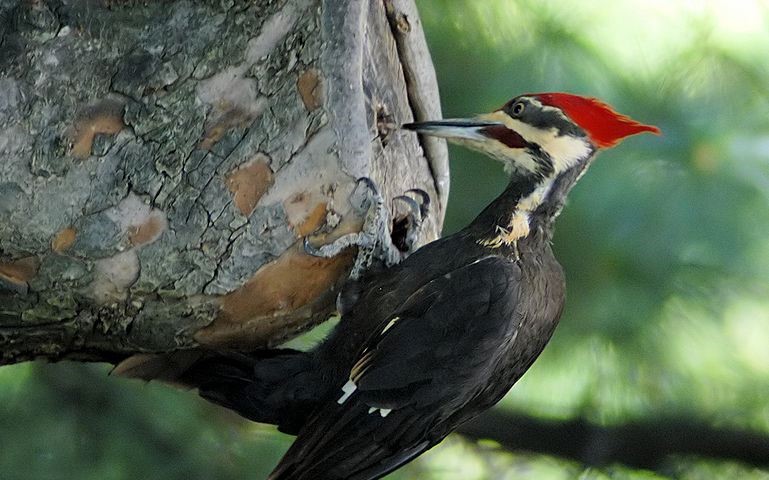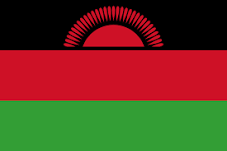Cutting Trees, Pushing Birds and Tourists Away

By Jacob Nankhonya
Holding a long pole in her hands, Mathilda Samson moves from one tree to another in search of dry tree branches. The pole was specially fitted with a crooked branch at the end so that she could hook on to the dry twigs and branches, and pull them down one by one as she builds on a bundle of firewood.
The fact that she has to go around many trees before the wood gets to a sizable collection not too small yet big enough to take care of her week’s cooking for her family tells of a story of over-harvesting in this particular part of the forest. After a successful wood hunt, she happily leaves the forest with the bundle perched on her head going home to her husband and children.
Mathilda hails from Malikete Village in TA Masumbankhunda and Dzalanyama Forest Reserve is her regular place where she comes to collect firewood and other forest resources such as fruits and mushrooms. Almost all households from her village and neighboring villages close to the forest depend on Dzalanyama for fuel wood.
In the distance, the sound of an axe cutting wood can be heard. This was the axe of Moyenda Ganizani from Ming’ongo Village TA Kalolo in Lilongwe who has paid for a ticket to cut fuel wood from the forest. The ticket authorizes him to cut any wood of his choice as long as it is dry and he collects enough to carry on his bicycle, nothing more.
Women and men legally collecting firewood in Dzalanyama Forest Reserve is a regular spectacle. While this may seem like a small issue, the Dzalanyama ecosystem is being affected in many different ways with some wildlife species suffering from the trend.
Moyenda Ganizan licensed tree cutter
For instance, bark beetles are deprived of a good livelihood for they depend on the dead tree barks as their homes. The sterling woodpecker also makes its nest in dry wood and the continual harvesting of dry wood in the forest is depriving this bird of its natural habitat.
The sterling woodpecker is flying miles deep into the forest looking for ideal wood into which it pecks cavities for its nest, leaving those bird-watching tourists to wonder where else to go with their birding equipment.
Jimmy Katengu, a birding tourism expert working as a tour and field guide with Land and Lake Safaris has expressed his disappointment with the growing destruction of natural bird habitats which is leading to birds moving away to faraway locations.
This, according to him has a direct impact on his career as a bird tourism guide while it directly impacts the number of tourists who come to Malawi to appreciate the bird species herein. Birding tourism is a niche that brings in tourists from far away countries such as across Europe just to watch specific bird species both those that are exclusively local and migratory ones.
Katengu fears that if the trend is left unchecked, it can lead to the most attractive species of birds migrating to neighboring countries and vanishing from the face of the country, the result of which is going to be tourists in the sector ditching the country as viable bird tourism destination. “At the rate things are going I wonder if we are going to have tourists in this niche of tourism. This is scary and is threatening even my career altogether.” Remarked Katengu. Katengu added that apart from sterling woodpeckers there are many different bird species that are being threatened out of Dzalanyama such as miombo rock thrush and bombs flycatcher, miombo tit, and nyasa seed cracker.
Another bird species under threat is Akalat which can only be seen at the Nkhwazi Forest in northern Malawi. At the moment loggers and timber millers are busy felling down trees in the forest.
Every location has its top ten bird species which the tourists are likely to ask for. These are must-see birds for such location and for one to spot those birds one really has to sweat a little. The moment they have been spotted the rest of the birds are easy to see.
According to Katengu, if things are left unchecked it will not be long before the consequences of the current deforestation will be felt. “The moment a tree has been cut down the birds which used to nest in there will immediately be rendered homeless” " he sadly stated. He further said, “It is not like the impact will wait for another season to be felt, right away the birds will have to fly away looking for alternative trees in which to put their nest and for me, I will have to sweat more to locate that particular bird species for my tourists.”
Dzalanyama Forest Reserve is under the management of Dzalanyama Catchment Conservation (DTT) which was formed in 2021. DTT’s member of the secretariat, Madalitso Salimu said that they are working with community members as a way of motivating the community to co-manage the forest with the trust. One of the ways in which this is happening is by the introduction of groups of apiculture where the clubs have beehives in the forest. “When these groups are taking care of the beehives they also protect the forest because they know that once the trees disappear they will have nowhere to put their hives.” Said Salim,
So far there are three groups that are already producing honey which is being sold to two honey cooperatives for processing to international standards for the international market.
The author is a CCARDESA TFCAs reporter and an Assistant Technical at the National Publications Limited in Lilongwe (Malawi).

























































